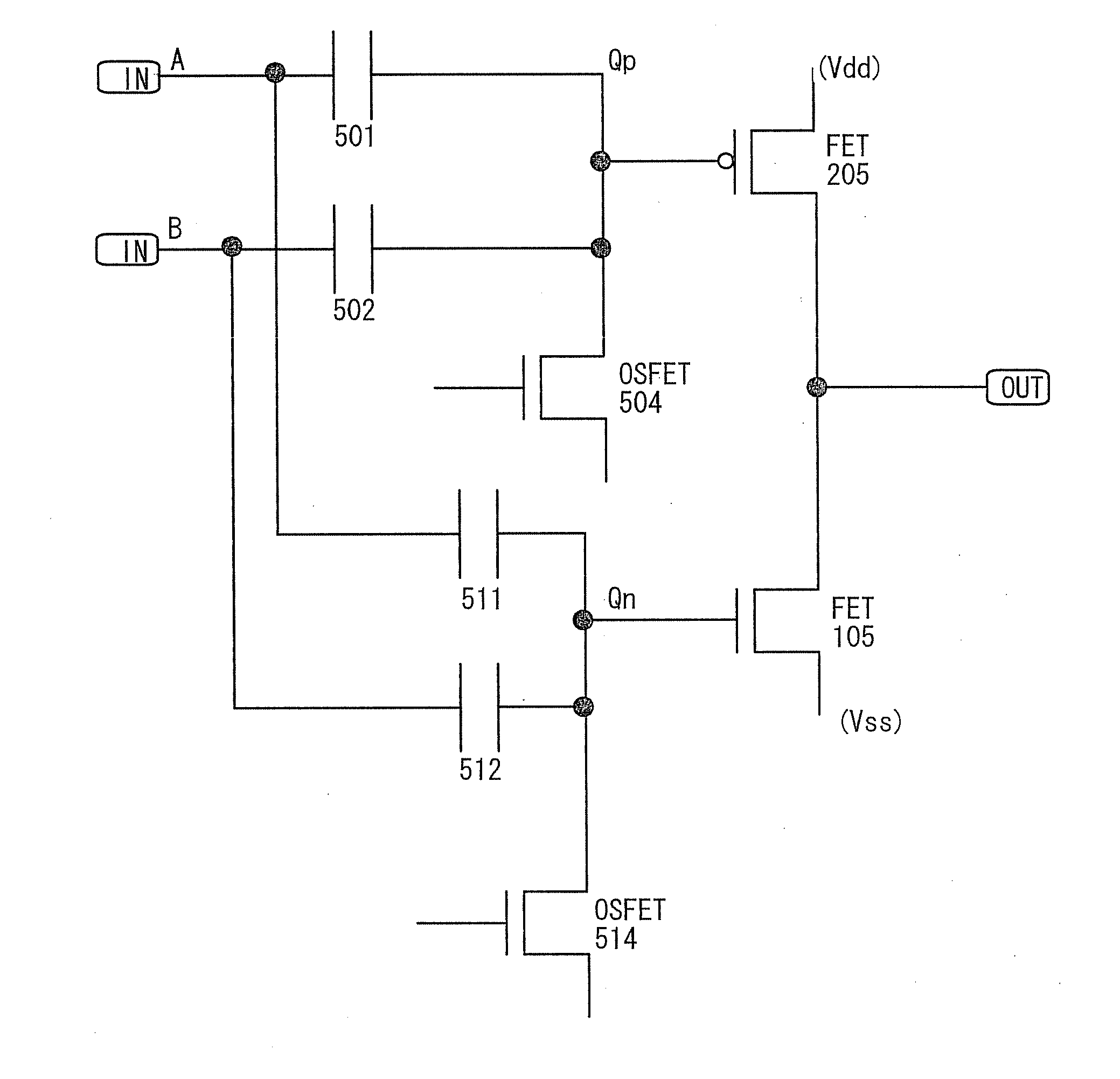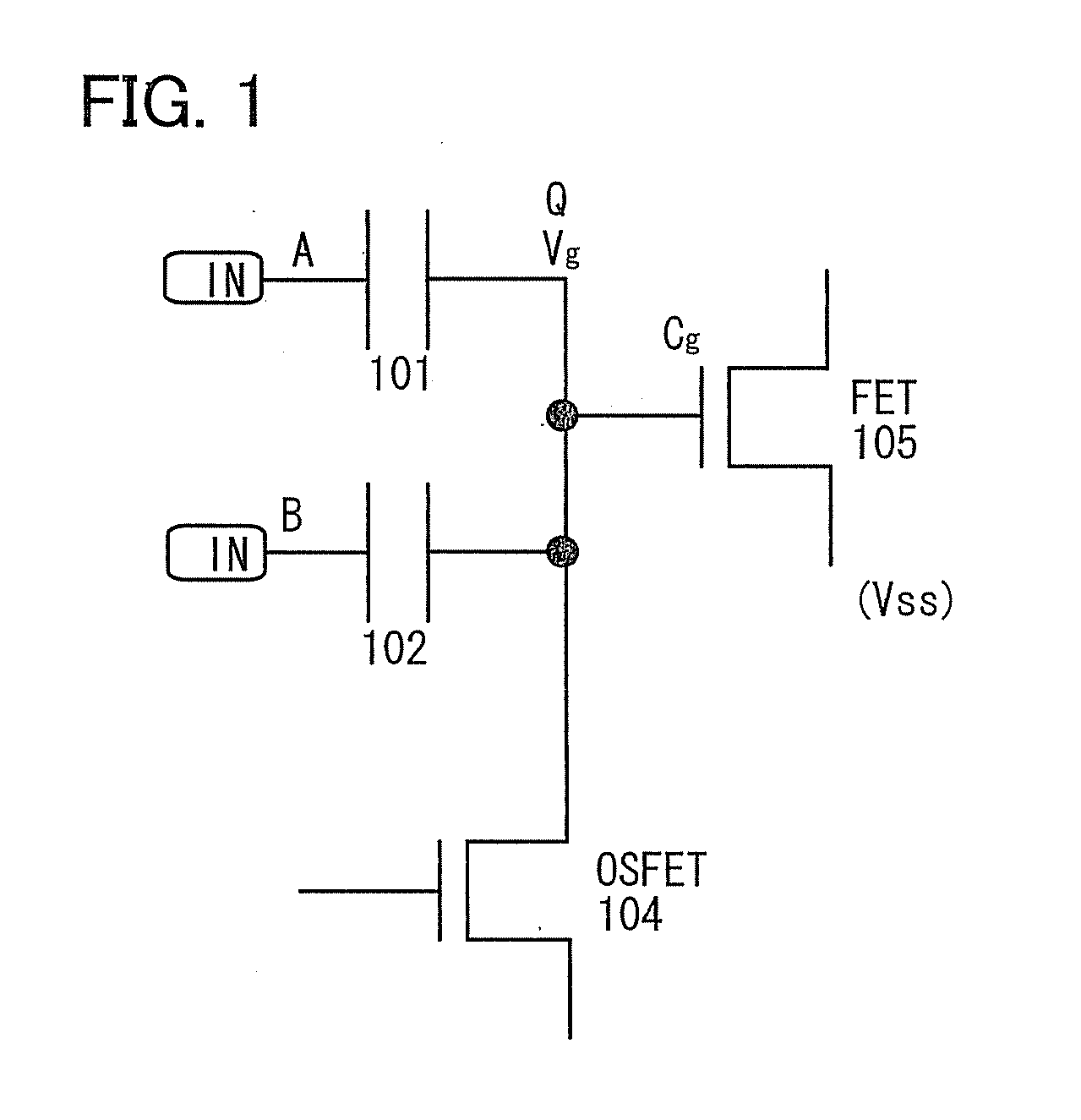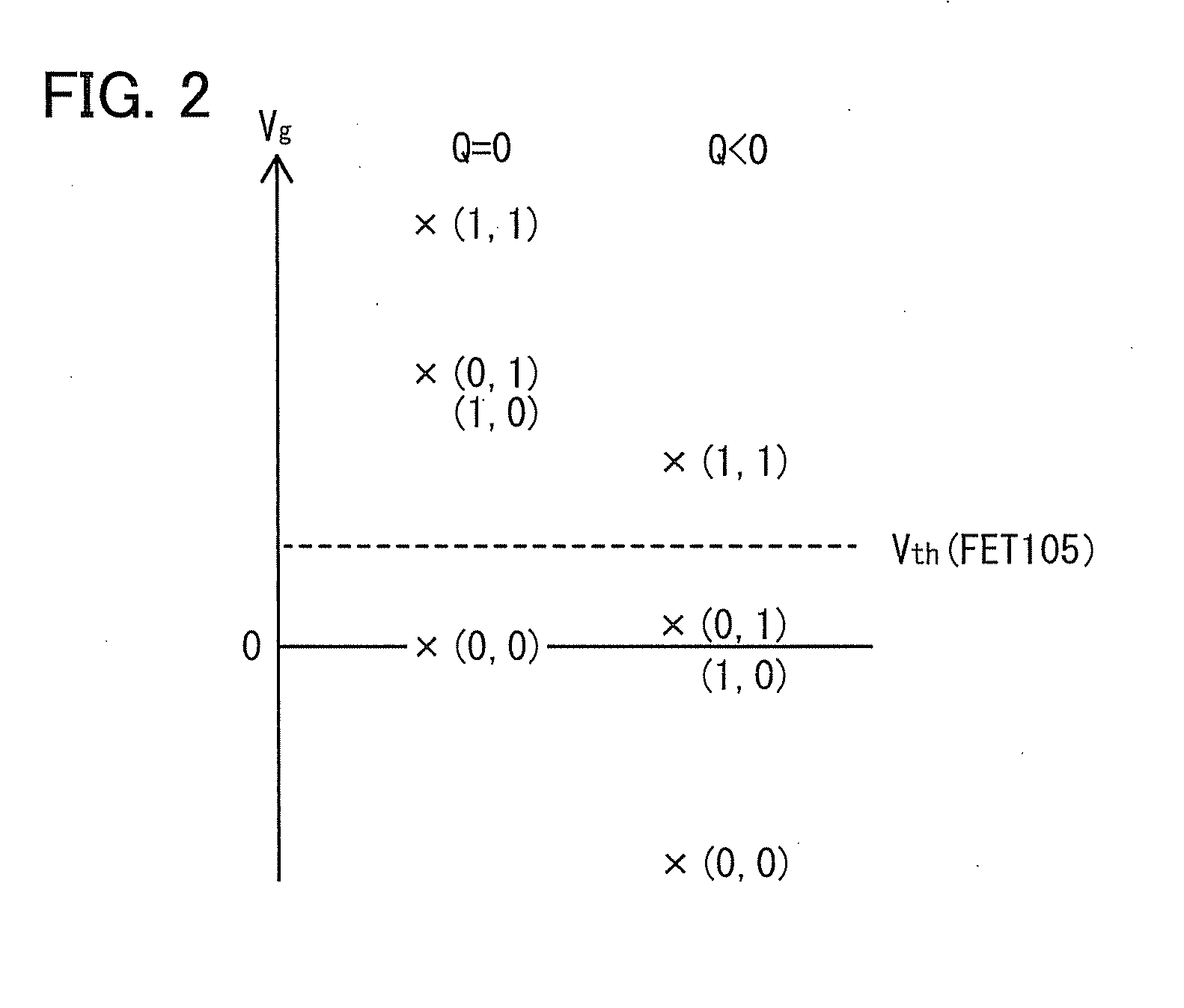Semiconductor Device
a technology of semiconductors and circuits, applied in the direction of power consumption reduction, pulse techniques, instruments, etc., can solve the problems of high leakage current, more severe problems in dynamic logic circuits than in static logic circuits,
- Summary
- Abstract
- Description
- Claims
- Application Information
AI Technical Summary
Benefits of technology
Problems solved by technology
Method used
Image
Examples
embodiment 1
[0047]In this embodiment, a basic structure of a logic circuit will be described. FIG. 1 illustrates a logic circuit including a first capacitor 101, a second capacitor 102, a first transistor (OSFET) 104 whose off-state current is low, and a second transistor (FET) 105.
[0048]The first transistor is also referred to as an OSFET because it includes an oxide semiconductor in a channel formation region. A channel formation region including an oxide semiconductor has n-type conductivity in many cases; thus, the first transistor is an n-channel transistor. The off-state current of such a transistor including an oxide semiconductor in a channel formation region is low. The details of the transistor will be described in the following embodiment.
[0049]A transistor including silicon in a channel formation region is used as the second transistor since the off state-current of the second transistor is not necessarily as low as that of the first transistor. Such a transistor is referred to as a...
embodiment 2
[0089]In this embodiment, a basic structure of a logic circuit in which the second transistor described in Embodiment 1 is a p-channel transistor will be described. FIG. 3 illustrates a logic circuit including the first capacitor 101, the second capacitor 102, the first transistor (OSFET) 104 whose off-state current is low, and a second transistor (FET) 205. The second transistor is a p-channel transistor.
[0090]The first capacitor 101, the second capacitor 102, the first transistor 104, and the second transistor 205 are electrically connected to one another as illustrated in FIG. 3. One electrode of the first capacitor 101 is electrically connected to a gate of the second transistor 205. One electrode of the second capacitor 102 is electrically connected to the gate of the second transistor 205. The one electrode of the second capacitor 102 is also electrically connected to one of a source and a drain of the first transistor 104. Since the first transistor 104 is an n-channel transi...
embodiment 3
[0128]In this embodiment, a logic circuit in which the circuit described in Embodiment 1 is combined with the circuit described in Embodiment 2 will be described.
[0129]In the circuit described in Embodiment 1 (see FIG. 1), the second transistor 105 is an n-channel transistor. In the circuit described in Embodiment 2 (see FIG. 3), the second transistor 205 is a p-channel transistor. These circuits can be combined to form a CMOS circuit.
[0130]FIG. 25 illustrates a CMOS circuit including a first capacitor 501, a second capacitor 502, a third capacitor 511, a fourth capacitor 512, a first transistor (OSFET) 504, a second transistor (OSFET) 514, a third transistor 205, and a fourth transistor 105. The third transistor 205 and the fourth transistor 105 are a p-channel transistor and an n-channel transistor, respectively.
[0131]These components are electrically connected to one another as illustrated in FIG. 25. One electrode of the first capacitor 501 is electrically connected to the termi...
PUM
 Login to View More
Login to View More Abstract
Description
Claims
Application Information
 Login to View More
Login to View More - R&D
- Intellectual Property
- Life Sciences
- Materials
- Tech Scout
- Unparalleled Data Quality
- Higher Quality Content
- 60% Fewer Hallucinations
Browse by: Latest US Patents, China's latest patents, Technical Efficacy Thesaurus, Application Domain, Technology Topic, Popular Technical Reports.
© 2025 PatSnap. All rights reserved.Legal|Privacy policy|Modern Slavery Act Transparency Statement|Sitemap|About US| Contact US: help@patsnap.com



